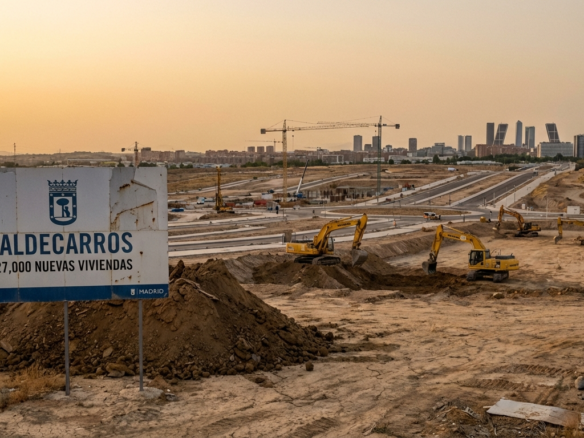Navigating the Tourism Challenges in Spain: Insights from Experts
Get 50% OFF!
Subscribe to our newsletter and enjoy a 50% discount on all listing packages, no strings attached!

Spain, a beloved destination for travelers worldwide, is currently facing significant challenges linked to its booming tourism sector. Experts are sounding the alarm about potential repercussions of overtourism, which, if unaddressed, could strain local resources and diminish the overall visitor experience.
The Current State of Tourism in Spain
In 2022, Spain experienced a robust recovery in tourism, welcoming approximately 71 million international visitors. This resurgence in travel has reinvigorated the sector, contributing significantly to the country’s economy. However, the increasing influx of tourists, especially in hot spots like Barcelona and Madrid, raises social and environmental concerns that must be managed effectively.
Experts Warn of Overtourism Risks
Tourism specialists have pointed out that while the economic benefits of high visitor numbers are apparent, the adverse effects cannot be ignored. A key issue highlighted is the “tourism trap” phenomenon, where local populations are displaced, and infrastructure is overwhelmed. According to experts, Spain must strike a balance between encouraging tourism and protecting its cultural heritage and the quality of life for residents.
Insights from Industry Specialists
Consulting firm PwC has conducted studies revealing that many cities in Spain are grappling with the dual burden of excessive tourist numbers and an inability to manage resources efficiently. The report emphasizes that if cities continue to neglect sustainable tourism practices, the long-term consequences could include environmental degradation and social unrest.
Economic Impact vs. Quality of Life
The economic impact of tourism is undeniable—tourism accounts for around 12% of Spain’s GDP and supports millions of jobs across various sectors. Nevertheless, experts are advising policymakers to prioritize strategies that ensure local communities share in the benefits of tourism, rather than facing challenges like overcrowding and inflated prices.
Local authorities are encouraged to develop policies that promote off-season travel, diversify tourism offerings beyond famous attractions, and limit the number of visitors in particularly vulnerable areas. This approach not only protects local ecosystems but also enhances the visitor experience by reducing strain on popular sites.
Sustainability Initiatives and Future Outlook
To mitigate the risks associated with overtourism, experts recommend implementing sustainable tourism initiatives. These include investment in infrastructure, education for both tourists and locals on respectful travel practices, and the promotion of lesser-known destinations to distribute tourist traffic more evenly across the country.
Spain’s tourism board is evaluating various strategies aimed at promoting sustainability, reinforcing the need for a cooperative effort among government, businesses, and local communities. Raising awareness about the impact of tourism and encouraging responsible behavior is critical to preserving Spain’s rich culture and natural beauty for future generations.
Conclusion
As the demand for travel to Spain continues to grow, addressing the challenges posed by overtourism is of utmost importance. By embracing sustainable practices and prioritizing the well-being of local communities, Spain can maintain its status as a premier travel destination while safeguarding its heritage and resources. The collaborative efforts of all stakeholders will be crucial in steering the future of tourism in Spain towards a more sustainable and equitable model.# Spain Warned of Rising Tourism Trap Concerns
As Spain continues to attract millions of international tourists each year, local experts are raising alarms about the potential pitfalls of overtourism. The country’s charm and cultural richness have made it a top destination, but the unchecked influx of visitors is leading to significant challenges. This article explores the warnings surrounding Spain’s tourism sector, the impacts of overcrowding, and strategies for sustainable tourism.
The Growing Appeal of Spain
Spain is one of the most visited countries in the world, welcoming approximately 83 million tourists in 2019 alone. The country’s vibrant cities, stunning coastlines, and rich history draw visitors from all over the globe, particularly from the UK, Germany, and France. However, this immense popularity translates into overwhelming pressures on infrastructure, local communities, and the environment.
The Dangers of Overtourism
Experts warn that Spain risks becoming a “tourism trap,” where the benefits of a bustling tourism economy are overshadowed by the adverse effects of overcrowding. This phenomenon can lead to:
- Environmental Degradation: Natural parks and coastal areas are suffering from excessive foot traffic, leading to erosion and habitat destruction.
- Cultural Erosion: Local communities are increasingly feeling the strain as their cultures and lifestyles are commodified for tourists.
- Economic Imbalance: While tourism provides many jobs, the local economy can become overly reliant on it, making it vulnerable to economic shocks.
According to economist Manuel Butler, when tourism comprises a significant portion of a region’s economy, any decline in visitor numbers can have devastating consequences.
Balancing Tourism and Livability
To mitigate the risks associated with overtourism, experts advocate for a dual approach emphasizing both sustainable development and the active participation of local communities. Strategies include:
Visitor Management: Implementing measures to limit the number of tourists in highly frequented areas can help maintain the integrity of local culture and natural attractions.
Seasonal Tourism Distribution: Encouraging tourists to visit during the off-peak season can alleviate pressure on popular sites. Spain could promote lesser-known locations or off-peak activities that offer authentic experiences.
Community Engagement: Involving local residents in tourism planning ensures that the economic benefits trickle down to the community and that cultural heritage is preserved.
The Role of Technology in Sustainable Tourism
Modern solutions such as smart apps and advanced analytics can play a crucial role in managing tourist flows. For instance, technology can provide real-time data on crowd sizes, which helps inform visitors about the best times to explore certain locations. Such innovations can partially address the issues created by sudden surges in visitor numbers.
Conclusions
Spain stands at a crossroads where it must address the dual pressures of maintaining its identity while catering to global tourists. The warnings from experts underscore the urgent need to embrace sustainable tourism practices. By adopting a more balanced approach to tourism, Spain can ensure that it remains a desirable destination without compromising the well-being of its locals and the environment.
Final Thoughts
As Spain continues to embrace its role as a leading tourist destination, the conversation surrounding overtourism becomes increasingly imperative. By fostering sustainable practices and community involvement, the country can pave the way for a future where tourism flourishes without becoming a trap.





Join The Discussion